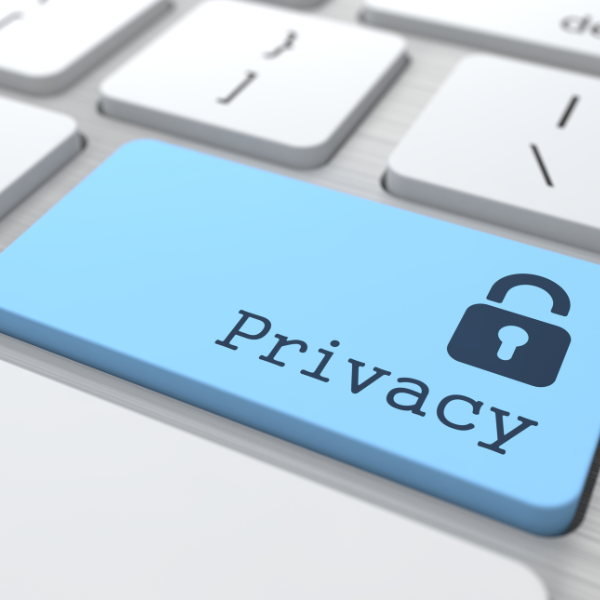The Learning Accelerator Blog/There’s No Digital Equity Without Data Privacy
There’s No Digital Equity Without Data Privacy
by Beth Holland on July 25 2022

Whether consciously or unconsciously, apps, internet service providers, and even schools could be selling or releasing data related to students’ — and teachers’ — locations, browsing habits, email content, and even direct messages. Over the past several months, the White House and Congress have called on the Federal Trade Commission (FTC) to increase protections for individuals. However, little has been said about district-issued devices and internet access.
Privacy is an often-overlooked barrier to digital equity. Although a number of laws intend to protect students (i.e., FERPA, CIPA, COPPA), the rush to adopt technology during the pandemic inadvertently put millions of students, families, and educators at risk. Researchers from the International Digital Accountability Council found that dozens of education apps sold student data — including demographic details and location services — to third parties that ranged from Google and Facebook to law enforcement. A May 2022 article from the Washington Post reported that education apps sold students’ data at a ‘dizzying scale, and a global investigation of 164 edtech apps found that 89% of them collected data that violated children’s rights. Given the increasing need to leverage technology for learning, students, teachers, and their families often have to sacrifice their privacy (either knowingly or unknowingly) in order to do so.
However, given the current social and political climate, the biggest threat to students’, teachers’, and families’ privacy could be the use of monitoring software on district-issued devices. Federal legislation requires schools to monitor students’ technology use on district-issued tablets, computers, and networks — including hotspots — out of safety and compliance concerns. The equity issue arises when systematic monitoring turns into surveillance. While schools have always monitored students’ technology use in school, it becomes a different issue once it starts happening inside their homes and after school hours.
Accepting district-issued devices and requiring the use of specific apps or platforms out of necessity creates a lack of meaningful consent. Even if students, teachers, and families agree to certain terms of service, that consent is meaningless if failure to comply would result in a lack of access or opportunity. When students and teachers rely on district-issued technology, they implicitly agree to have their school potentially monitor their interests, learning, communication, and online exploration, which could prevent them from pursuing creative activities and authentic learning beyond classwork. Whereas more affluent individuals can switch to their own devices and internet connections to create a separation between their personal and school use, those who rely on district-issued technology do not have the same option.
According to a report from the Center for Democracy and Technology, students of color, immigrants, those who identify as LGTBQ+, and now, women might find these monitoring practices especially invasive given the potential for increased risk of discipline or policing. Take the surveillance issues associated with the software Gaggle as an example. After analyzing approximately 1,300 records from Minneapolis Public Schools obtained via a public request, reporters from The 74 found that the system disproportionately affected LGBTQ+ students, flagging terms such as “gay” and “lesbian.” While administrators defended the software, claiming it to be beneficial for proactively addressing mental health crises, many students stated that the system had just as many inaccuracies, leading to stress, anxiety, and fear.
This challenge has become even more salient in this moment. For years, privacy advocates have warned of the dangers facing consumers around data tracking, especially apps that sell location services, web searches, and anything related to healthcare. However, on the day that the Supreme Court overturned Roe v. Wade and Planned Parenthood of Southeastern Pa. v. Casey, The Center for Technology and Democracy issued a dire warning about privacy. With many states moving rapidly towards criminalizing abortion and the push to enact state laws that threaten to turn data into evidence against people seeking reproductive care, district administrators will need to address a number of ethical questions in the coming weeks as these additional threats to privacy could not only discourage student learning but also put individuals directly in harm's way.
As districts begin to plan how they will implement technology in the coming school year, they need to ask whether increasing access will truly lead to equity without explicit attention to protecting privacy. Now, more than ever, they need to examine the data collected by both their internal monitoring systems as well as the apps that students and teachers may use. While this can feel like a daunting task, the organizations below offer resources and tools for administrators, educators, students, and families to get started.
Student Privacy Compass has resources for educators, parents, students, policymakers, and education agencies to better understand how to advocate for as well as protect student privacy.
A4L’s Student Data Privacy Consortium (SDPC) is a collaborative including districts, schools, state agencies, policymakers, and trade organizations that produces tools and resources.
CoSN’s Privacy Toolkit provides guidance for technology leaders to create and improve a student data privacy program. This is a free resource, but logging in is required to access.
Explore the series on digital equity:
 Exponential Learning Initiative
Exponential Learning Initiative